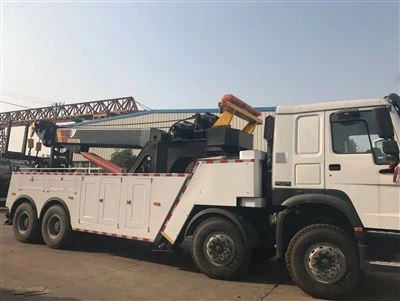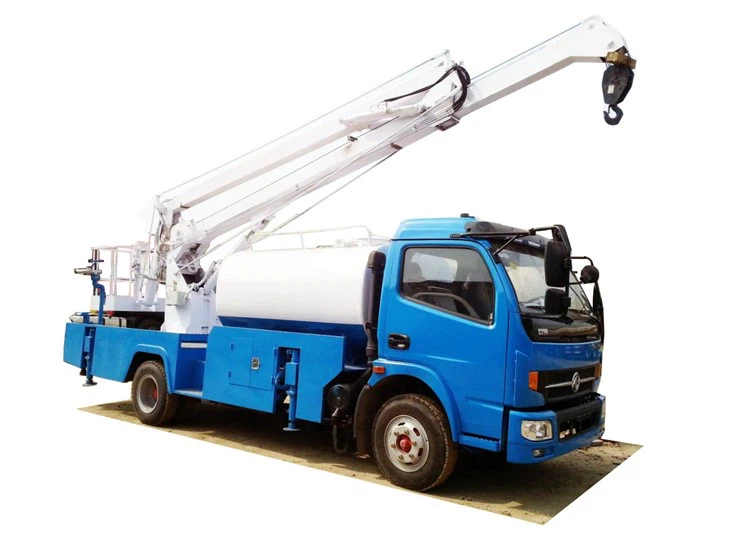A Comprehensive Guide to Aerial Platform Trucks: Features, Uses, and Considerations

Introduction
Aerial platform trucks have become vital tools for various industries, including construction, maintenance, and tree care. These versatile vehicles, which combine the mobility of a truck with an elevated platform, allow workers to reach high locations safely and efficiently. This article explores everything you need to know about aerial platform trucks, including their features, applications, types, maintenance tips, and more. Whether you’re a contractor looking to purchase one or an operator seeking to improve your skills, this guide is designed for you.
What is an Aerial Platform Truck?
An aerial platform truck, often referred to as a bucket truck, is a type of vehicle equipped with an extendable aerial device that enables workers to perform tasks at height. These trucks are commonly used for utility work, maintenance, construction, and other tasks that require reaching elevated areas safely.
Key Features of Aerial Platform Trucks
- Elevating Platform: The primary feature of these trucks is their extendable platform, which can reach varying heights based on the model.
- Versatility: Aerial platform trucks are designed for various applications, from electrical work to tree trimming.
- Stability: Equipped with outriggers, these trucks provide stability during operation, ensuring safety for the worker in the bucket.
- Safety Features: Many models incorporate safety features such as harness attachments, emergency stop buttons, and tilt sensors.
Types of Aerial Platform Trucks
Aerial platform trucks come in different types, each designed for specific applications. Understanding the types available can help you choose the right one for your needs.
1. Telescopic Boom Lifts
Telescopic boom lifts feature a straight arm that can extend vertically, providing significant reach. These are ideal for tasks that require maximum height and reach.
2. Articulating Boom Lifts
These lifts have a jointed arm, allowing them to navigate around obstacles easily. They are suitable for tasks requiring access to hard-to-reach areas.
3. Scissor Lifts
Scissor lifts have a platform that moves vertically using a crisscross mechanism. They are perfect for jobs that require vertical elevation without horizontal reach.
4. Truck-Mounted Aerial Lifts
These are mounted on the bed of a truck, providing mobility along with the ability to reach heights. They are widely used in construction and maintenance.
5. Towable Aerial Lifts
These lifts can be towed by a vehicle and set up quickly. They are often used for temporary tasks like painting or sign installation.
Applications of Aerial Platform Trucks
Aerial platform trucks are utilized across various sectors due to their adaptability. Here are some common applications:
1. Electrical Work
Aerial platform trucks are extensively used for installing and maintaining overhead power lines, streetlights, and communication cables.
2. Tree Care and Maintenance
They are invaluable for arborists, allowing them to prune, trim, or remove trees safely from an elevated position.
3. Building Maintenance
These trucks facilitate the cleaning of windows, painting of high-rise buildings, and other maintenance tasks that require reach.
4. Construction
Aerial platform trucks are often used on construction sites to assist workers in reaching elevated work areas, especially during installation and framing.
5. Entertainment and Events
In the film and entertainment industry, aerial lifts are used to set up lighting rigs and film crews who need to shoot from above.
Choosing the Right Aerial Platform Truck
Selecting the appropriate aerial platform truck involves assessing several factors to ensure you get the equipment that best suits your needs.

1. Maximum Height Requirement
Determine the maximum height you need to reach. Different trucks have varying height capabilities, so understanding your project’s requirements is crucial.
2. Weight Capacity
Consider the weight of the materials and personnel that will be on the platform. Different aerial trucks have specific weight limits that must not be exceeded.
3. Type of Terrain
Think about the environment where the truck will be operated. Some models are better suited for rough terrain, while others are designed for smooth surfaces.
4. Ease of Operation
Look for user-friendly controls and features that make operating the aerial lift safer and more efficient.
5. Budget Constraints
Finally, factor in your budget. Aerial platform trucks can range widely in price, so it’s essential to find one that meets your needs without breaking the bank.
Maintenance Tips for Aerial Platform Trucks
Proper maintenance of aerial platform trucks ensures safety and longevity of the equipment. Here are some essential maintenance tips:
1. Daily Inspections
Conduct daily inspections before use. Check hydraulic systems, electrical components, and safety features to ensure everything is functioning correctly.

2. Clean the Equipment
Regularly clean the truck, including the platform and any attachments, to prevent debris buildup that could hinder operations.
3. Lubrication
Ensure all moving parts are adequately lubricated to minimize wear and tear and to ensure smooth operation.
4. Follow Manufacturer Guidelines
Adhere to manufacturer recommendations for maintenance schedules to keep the truck in good working order.
5. Store Properly
When not in use, store the aerial platform truck in a dry, safe location to protect it from the elements and reduce potential damage.
Safety Considerations When Using Aerial Platform Trucks
Safety is paramount when operating aerial platform trucks. Here are some key considerations:
1. Use Personal Protective Equipment (PPE)
Always wear appropriate PPE, such as hard hats, harnesses, and safety glasses, to protect yourself during operation.
2. Understand the Equipment
Familiarize yourself with the specific aerial platform truck’s controls and features before use to ensure safe operation.
3. Secure the Work Area
Ensure the area around the operation site is secure and free of hazards that could pose risks to operators or bystanders.
4. Maintain Clear Communication
If working with a team, establish clear communication signals between ground personnel and those in the aerial lift to ensure a coordinated effort.
Practical Examples of Aerial Platform Truck Use
To illustrate the versatility of aerial platform trucks, here are a few real-world examples:
Example 1: Power Line Maintenance
A utility company uses a truck-mounted aerial lift to repair downed power lines after a storm. The technician reaches the elevated lines safely, completing necessary repairs efficiently.
Example 2: Urban Tree Trimming
An arborist employs an articulating boom lift to trim trees in an urban environment without damaging adjacent structures. The lift allows for precise maneuvering around obstacles.
Example 3: Building Restoration
A construction crew uses a scissor lift to install windows on a multi-story building, allowing them to work at a consistent height while safely supporting personnel and tools.
Example 4: Film Production
A film crew utilizes a telescopic boom lift to set up lighting equipment above the scene, providing the necessary height without obstructing the view of the camera.
Cost of Aerial Platform Trucks
The cost of aerial platform trucks can vary widely based on several factors such as type, height capabilities, brand, and additional features.
1. Purchase Costs
On average, the purchase cost for new aerial platform trucks can range from $25,000 to over $150,000. Generally, scissor lifts are on the lower end of this spectrum, while telescopic boom lifts tend to be more expensive.
2. Rental Costs
If purchasing isn’t an option, renting might be more feasible. Rental prices vary but typically range from $200 to $1,200 per day, depending on the truck type and rental duration.
3. Long-term Costs
Consider ongoing costs like maintenance, insurance, and fuel consumption. Budgeting for these expenses is crucial for long-term ownership.
FAQ Section
1. What is the average height an aerial platform truck can reach?
The average height for most standard aerial platform trucks ranges from 30 to 130 feet, depending on the model and type. Specialized trucks can reach even higher.
2. How often should I perform maintenance on an aerial platform truck?

Regular maintenance checks should be conducted daily before use, while thorough inspections and servicing should follow the manufacturer’s recommended maintenance schedule, which is usually after a specific number of operating hours.
3. Can I operate an aerial platform truck without prior training?
No, operating an aerial platform truck requires training and certification to ensure operator safety and compliance with regulations. Always seek proper training first.
4. What are the safety features in modern aerial platform trucks?
Common safety features include emergency stop buttons, tilt sensors, and harness attachment points. Operators should familiarize themselves with these features before use.
5. How can I ensure the right weight capacity is maintained?
Always check the manufacturer’s specifications regarding weight limits and avoid overloading the platform. Keep a scale handy, if possible, to verify weights of personnel and materials.
6. Are there any regulations regarding aerial platform truck use?
Yes, regulations often vary by region or country and typically include standards set by occupational safety organizations. Always consult local regulations before use.
